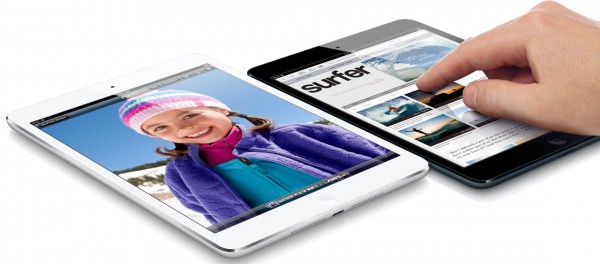Is Apple hiding weak iPad mini sales?

This morning, Apple issued a press release touting 3 million iPad 4 and mini WiFi sales over the first three days (cellular models aren't available yet). Both products went on sale November 2. But that's not the data I waited for. Apple didn't break out iPad mini, which is suspicious. Rumors, and enormous buzz, preceded the launch for most of the year. Hell, I posted a buying poll in February. The first tell: No big, pre-order announcement, which is atypical of a company that seizes every opportunity to boast about sales for marketing advantage. If early numbers were really good, Apple would say so.
By combining the sales of two products, Apple gets headlines across the InterWebs about a big launch that the company claims is twice iPad 3. Marketing value is still big, while avoiding answering question: What about iPad mini? Considering that the smaller tablet opens new pricing and size segments and, by Apple CFO's admission, is a considerably low-margin product that could impact profits, answering the question is quite important. Revealing: In a statement, CEO Tim Cook says Apple "practically sold out of iPad minis".
Of course, Apple wouldn't reveal weak, or smaller-than-analyst-forecast numbers. No company would, and Apple has got these numbers announcements down to a science -- typically releasing them in the half hour before US stock markets open and thus getting any share lift on positive perceptions about sales. Hey, that's what public companies do; Apple just demonstrates more marketing finesse than most other tech companies. But in today's numbers what's missing is more important than what's there.
For example, Apple touts first-three-day sales that are twice iPad 3. But following the third-generation's launch in March, Apple boasted about 3 million sales. That's the same number. The previous model debuted with cellular models, too, which presumably accounted for half of sales, since Apple today says that doubling is for 1.5 million WiFi models. But even that comparison, and same launch numbers, which represent two models and one hotly anticipated, are disconcerting.
Something else: Reach. Third-gen launched in just nine countries (and Puerto Rico and US Virgin Islands), while the two newer models debuted in more than 30.
The point: Sales aren't really comparable because they represent so many different things: Two different size iPads; 2.5 times as many launch locales; WiFi models now, but cellular also last time. Then there's the missing iPad mini breakout that could lift Apple out of its recent stock slide if really good.
A recent BetaNews poll reveals price to be an obstacle. iPad mini ranges from $329 to $659, which makes it the highest-priced tablet in its size class, by considerable margin. Currently, 79.7 percent of respondents say they won't buy iPad mini. That starkly contrasts with the February poll, when approximate size but not price was known: 55.78 percent of respondents said they would buy the smaller iPad.
Is iPad mini a hit or miss? It's up to analysts to guess based on channel checks and other metrics.
But one thing is certain: Apple got some early stock lift from the 3 million announcement, which unsurprisingly spread across the InterWebs with little analysis or question from bloggers or reporters. Stock opened at $583.29 and spiked to $587.77 before settling down to $583.17 as I post.
